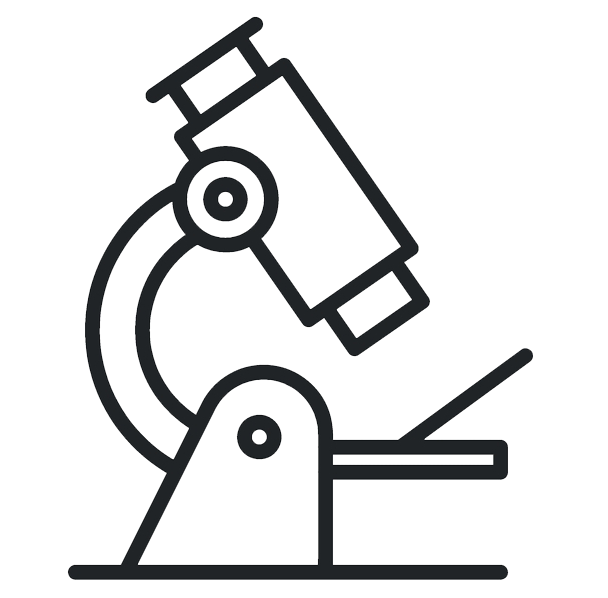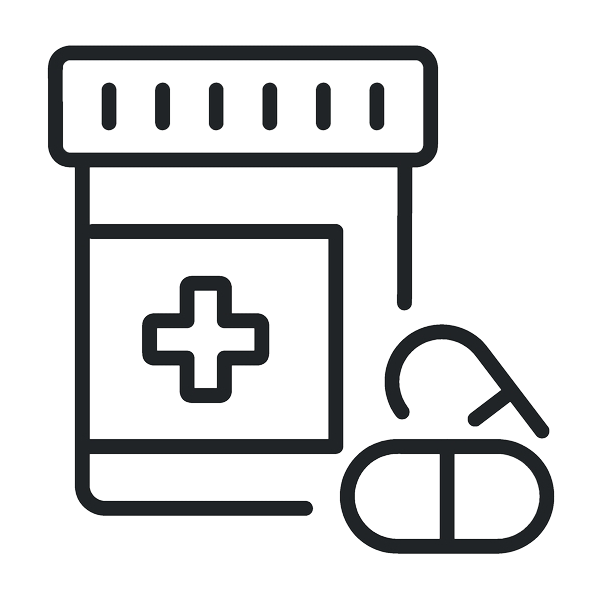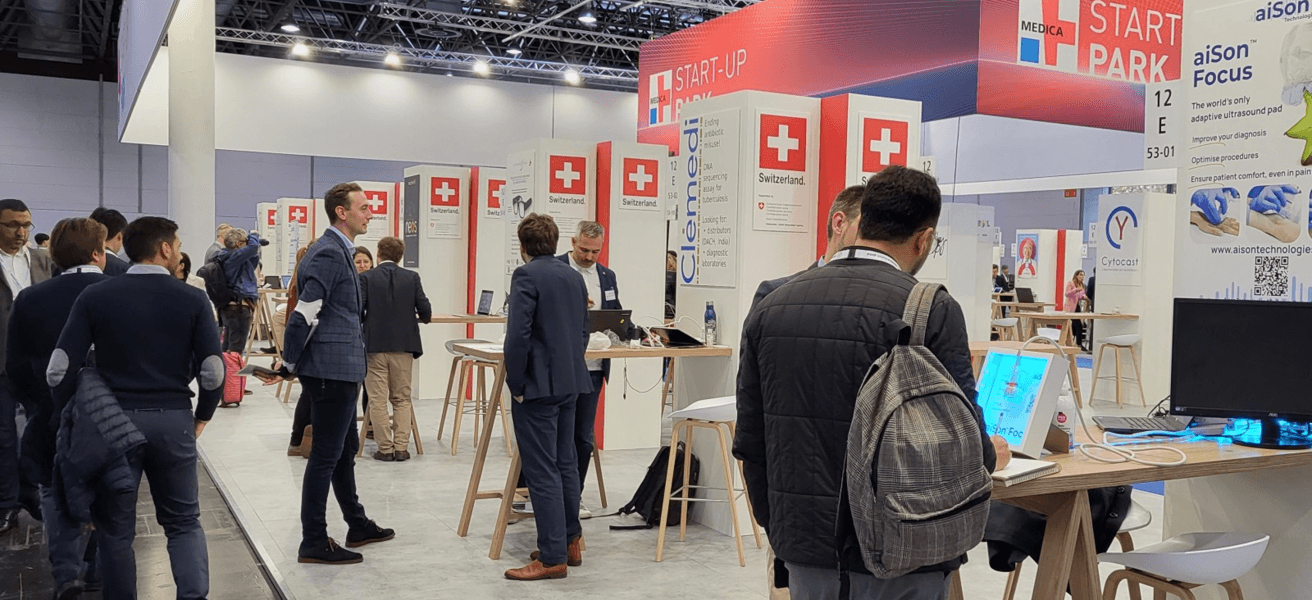Medical technology events like WHX Dubai, MedTech Conference, MD&M West, LSI Conference, and MEDICA are pivotal moments for companies aiming to showcase innovation, build partnerships, and gain strategic insights into the ever-evolving healthcare landscape. However, with thousands of companies competing for attention, success requires a comprehensive, multi-stage strategy.
This guide walks you through how to maximize your event ROI - before, during, and after the event - and achieve key objectives like: boosting brand visibility, generating qualified leads, expanding partnerships, and demonstrating thought leadership.
Pre-event
The best practice among medical device exhibitors is to initiate marketing campaigns at least 3-6 months before the event. This early start is crucial for engaging your target audience, who are finalizing their conference agendas and scheduling key meetings in advance. This includes hospital managers, healthcare professionals, distributors, investors, and C-level executives.
Medtech marketing thrives on credibility, outcomes, and problem-solving. Therefore, your content and outreach should aim to build trust and address pressing clinical needs. Not only does it help generate buzz, but it also ensures that high-value attendees keep you in mind.
Goal setting
Before launching your campaigns and content, clearly define what success looks like for your company. Depending on your general business objectives, identify the relevant goals and KPIs for the event, as this will shape every aspect of the event planning, from messaging and asset creation to measuring impact after the show. Here’s how to approach it:
- Define your target audience: key decision-makers you want to reach: hospital managers, healthcare professionals, KOLs, investors, distributors, government stakeholders, and C-level;
- Prioritize objectives depending on your business strategy:
- Lead generation - build a qualified pipeline of new prospects.
- Brand awareness - connect with current clients and introduce your latest innovations to new audiences, position your team as experts in device innovation, regulatory compliance;
- Partnerships - identify distributors, clinical partners, or investors for future collaborations;
- Sales - focus on conversations that convert directly into device purchases or trials.
- Define measurable KPIs (see our examples below):
- Meet 100 potential clients and record them in your CRM;
- Schedule 15 product demo meetings during the event;
- Close 10 post-event sales within 90 days;
- Meet with 5 potential investors or partners;
- Increase website traffic by 25% before the event;
- Schedule 3 speaker sessions or panel discussions for your experts.
Once your goals are clear, it’s much easier to focus your messaging and allocate resources effectively.
Content
In the medtech sector, content must balance technical depth with broad appeal, targeting different buyer personas and stakeholders:
- Attention-grabbing teaser content: short, impactful videos and animations highlighting new products or technological breakthroughs;
- Educational leadership content: whitepapers, research articles, and downloadable resources addressing industry hot topics - regulatory compliance updates, advances in device design, clinical trial innovations, market access strategies;
- Expert-driven teaser interviews: interviews with your clinical advisors, R&D leaders, or regulatory experts across digital channels to build excitement and credibility around the upcoming event and your presence.
Great content sets the stage, but without targeted distribution, even the best assets can be lost in the noise.
Omnichannel visibility
Pre-event visibility across multiple touchpoints ensures optimal reach of your target audience:
- SEO-optimized event landing pages: event-related keywords, ensuring discoverability in the search engine;
- Strategic paid ad campaigns: targeted ads across LinkedIn (ideal for reaching healthcare executives and hospital administrators), Google (targeting researchers and buyers), and Meta (for broader awareness among HCPs and distributors);
- CRM-powered email outreach: segment your CRM database to send tailored invitations, addressing separately investors, clinicians, government leaders, and distributors with personalized value propositions;
- Social media: post about speaker sessions, live demos, or product launches, highlighting key topics to resonate with the event agenda;
- Resources: ensure visibility and prepare materials on platforms like Medscape or Coliqvio to share valuable content aimed at HCPs specifically.
Omnichannel pre-event campaigns can increase booth traffic, strengthen lead pipelines, and secure onsite engagement.
During the event
Now that the conference is underway, it's time to captivate, connect, and convert. So make every interaction count.
A seamless booth experience, strategic lead capture, and compelling presentations are critical to stand out and achieve your goals of brand exposure, deal-making, and thought leadership.
Booth experience
Your booth is more than a display — it’s your brand’s ambassador. It should instantly communicate innovation, professionalism, and credibility:
- Engaging takeaway materials: product sheets, innovation roadmaps, and research posters with QR codes linking directly to case studies, videos, or demo booking forms;
For our Australian client, Field Orthopaedics, we were developing visuals to amplify their event presence. As a result, we developed a 3D animation, extracts from which were later used on LinkedIn, booth decorations, and their website.
- Clinical specialists on-site: staff your booth with enough knowledgeable experts to speak to hospital administrators, healthcare buyers, and investors;
- Immersive booth design: live demos, AR/VR experiences, or hands-on device trials to let attendees interact with your technologies firsthand.
Attracting visitors to your booth is just the beginning - now, it’s essential to capture their contact information to ensure an effective follow-up, keeping the lead warm.
Gamification
But after all, you want others to remember your booth and company after the event. And the best strategy to make a lasting impression is to create an experience, not just a decoration. So, instead of relying solely on visual displays, try creating a sensory-driven environment that tells more about the device and the brand and invites active participation.
Interactive games or quizzes, as well as immersive AR/VR experiences with interactive product demonstrations, for example, can significantly increase overall engagement and facilitate your lead generation process. Additionally, gamified experiences can offer valuable insights into your target audience’s behavior and preferences, which can be leveraged for informed future sales and marketing strategies.
Finally, gamification naturally encourages attendees to share it online. When visitors engage with fun, interactive, yet insightful elements, they want to share it on social media, which helps increase your brand’s visibility far beyond the event.
Lead capture
An efficient lead capture strategy enables real-time tracking and quick follow-ups post-event:
- Lead forms integrated with CRM: to capture attendee details (interest areas, regulatory compliance, clinical validation, etc.);
- QR-codes: to immediately deliver additional content and collect lead information;
- Social media: live coverage posting on social platforms to broaden your reach and engage prospects who couldn’t visit in person.
Scientific Presentations
In addition to lead generation, it’s crucial to establish your expertise and clearly articulate the scientific foundation of your product. From our experience, the most effective approach is to captivate the audience with visuals that immerse them in your scientific narrative.
Healthcare professionals and potential partners expect to see the technology in action and the clinical evidence supporting it. Hence, you should translate complex scientific data into both an engaging and easy-to-digest format. Consider using the following assets:
- Explainer videos: animated videos help decision-makers better understand your MoA and clinical advantages;
For our loyal client, Neptune Medical, we developed a robotics surgery animation about their product Pathfinder, which was used in Series D fundraising campaign and helped them secure 97$ million in funding. Currently, we’re continuing to collaborate to visualize MoD of other products from Neptune Medical’s portfolio.
- Data-driven presentations: real-world evidence, practical case studies on market access, clinical trial results, success stories using numbers, graphs, and other data visualizations.
You can further leverage these materials to secure speaker opportunities, such as live sessions or poster presentations, often available at leading industry events like WHX Dubai, MedTech Summit, or LSI Conference.
Live demonstrations
While scientific presentations help you deliver critical insights and establish credibility, live demonstrations, if possible, take it a step further by offering real-time, practical proof of your device’s effectiveness.
- Live demonstrations: real-time patient treatments to provide compelling evidence of efficacy and showcase product benefits;
- Expert-led Q&A sessions: to address audience questions, foster closer engagement, and uncover valuable insights into their needs (to later support your sales and product development strategies).
Another critical point is to develop content that targets the patient audience as well. Too often, the focus is solely on HCPs, whereas patient communication is overlooked. However, educational content is becoming increasingly important among the end consumer today. Therefore, we recommend providing educational content not only for professionals but also for patients. This way, you’ll let your potential clients know that you will support and help them effectively communicate the safety and effectiveness of the product to end-consumers.
Once the event wraps up, it’s now essential to keep the momentum, ensuring your brand stays top-of-mind.
Post-event
Now, the actual work of nurturing and converting prospects begins - re-engaging attendees and continuing to expand your brand’s visibility. This is where strategic recap content and effective lead management become crucial to achieving a sustainable ROI.
Recap content
The objective is to prolong the event experience, making sure both attendees and those who missed the conference stay connected to your brand. Here are some effective ways to sustain visibility and keep engagement high:
- Social media: highlights from product demos, expert panels, and booth activities across LinkedIn and other platforms; post booth traffic stats, customer testimonials, and snapshots of your team engaging with thought leaders;
- Blog articles and video recaps: summary of key industry trends discussed at the conference, focusing on regulatory updates, innovation insights, or quality system advancements.
The next thing is strategic lead nurturing to drive revenue.
Lead management
Structured, strategic lead follow-up can turn booth conversations into long-term business partnerships. And having a multi-functional CRM system will significantly simplify this process. We usually use the following approaches:
- CRM lead scoring and segmentation: based on job title, engagement level, and strategic interest areas;
- Personalized email campaigns: tailored messaging based on the attendee’s area of interest;
- Exclusive gated content: in-depth whitepapers, clinical studies, or device demo webinars, only to those who engaged with you at the event.
And to continuously improve, you must track and analyze your performance.
Performance analytics
The efficiency of your tech stack - particularly your CRM and content management system - plays a key role in how quickly you can access data on content performance and attendee engagement. However, regardless of the tools you use, there are ways to evaluate the event’s ROI:
- Conversion rates: how many event leads moved into your pipeline;
- Engagement metrics: which assets (videos, demos, speaking engagements) generated the most interactions in terms of views, downloads, and shares to guide future campaigns;
- Feedback collection: post-event surveys from attendees and internal teams.
Well-structured analytics ensures your team understands what worked, what didn’t, and what to focus on next. So, try combining CRM insights, engagement data, and lead outcomes. Not only will it strengthen your future event strategies, but it will also make it easier to justify investments and scale what’s working.
Conclusion
Succeeding at a MedTech event is no longer about simply showing up. It now requires involvement before, during, and after the event. Whether your goal is to expand your reach, generate new leads, build strategic partnerships, or raise brand awareness, it all starts with a step-by-step plan.
Start early with content that builds trust and addresses clinical priorities, and make sure to apply the omnichannel approach to reach decision-makers where they are. During the event, focus on creating evidence-backed immersive experiences, and use tools to capture and qualify leads. After the conference, maintain momentum with strategic recap content and personalized follow-ups to get prospects in your pipeline.
In other words, we recommend treating conferences as full-cycle marketing opportunities. If you want us to share our cases and projects, which we prepared for the events our clients attended, feel free to book a quick intro meeting. We’re happy to assist your team in event preparation.
*Photo from https://www.s-ge.com/en/event/swiss-pavilion/swiss-corner-medica-start-park-2025


